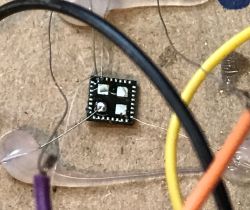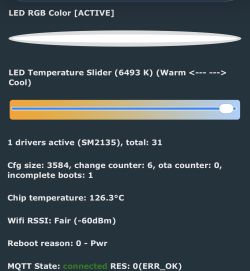FIBARO, the manufacturer of a wireless building automation system, invites you to participate in practical training courses for installers, electricians, building practitioners. Participants receive certificate of completion of the training.
FIBARO is expanding its network of professional installers. Over the past year, the company has trained more than 1,000 people . This year, FIBARO is organising training courses in Łódź, Bydgoszcz, Opole, Poznań, Tarnów, Gdańsk, Warsaw, Lublin, Wrocław, Krakow, Katowice, Płock, Rzeszów, Szczecin, Toruń, Elbląg, Kędzierzyn Koźle, Olsztyn, Radom, Gdynia and Zielona Góra, among others.
See registration details and available training dates:
https://www.fibaro.com/pl/events/szkolenia-dla-instalatorow/ .
The training is a one-day course and includes a practical and theoretical part. As part of the training, you will receive a certificate entitling you to install the FIBARO system throughout Poland and additional benefits, such as:
- gaining new skills and practical knowledge,
- access to training materials, videos and sales support materials,
- a start-up bonus in the form of a one-off purchase of the Fibaro System under very favourable commercial conditions,
- technical support during the design and installation of the system at the first customers.
The certificate obtained confirms the qualifications of designing and performing FIBARO intelligent house installations, designing and configuring Z-Wave networks, knowledge of system integration methods.
Training agenda .
PRESENTATION PART
1. Fibar Group S.A – manufacturer of the Fibaro System
2. what is a smart home?
3. applications of the intelligent house
4. Z-Wave technology and Apple HomeKit in the smart home
5. technical details of wireless building automation technologies
6. FIBARO products with applications and technical details
7. controllers – comparison of possibilities
WORKSHOP PART
1. Fibaro interfaces
2. system configuration
3. configuration interface functionalities
4. creation of scenes and associations
5. mobile platforms
6. remote access
7 Practical tips for system installation
8 Knowledge platforms
9. integrations
FIBARO is a global brand, a leading smart home system manufacturer and the fastest growing home automation company in Europe. The company is present on 6 continents, in more than 100 countries.
FIBARO products form a mutually complementary wireless smart home system in the areas of:
-lighting/lighting,
-gates and roller shutters
-heating/air conditioning,
-safety/security,
-multimedia,
-garden .
FIBARO manufactures devices operating in the Z-Wave protocol and compatible with the Apple HomeKit platform.
The system's capabilities are extended by integration with devices from many manufacturers, e.g. Philips, Netatmo, Sonos, D-Link, Yale, DSC.
If you wish to expand your competence in training or you are interested in implementing building automation in your home, it is worth visiting the FIBARO website: https://www.fibaro.com/pl/.
See registration details and available training dates:
https://www.fibaro.com/pl/events/szkolenia-dla-instalatorow/ .

FIBARO is expanding its network of professional installers. Over the past year, the company has trained more than 1,000 people . This year, FIBARO is organising training courses in Łódź, Bydgoszcz, Opole, Poznań, Tarnów, Gdańsk, Warsaw, Lublin, Wrocław, Krakow, Katowice, Płock, Rzeszów, Szczecin, Toruń, Elbląg, Kędzierzyn Koźle, Olsztyn, Radom, Gdynia and Zielona Góra, among others.
See registration details and available training dates:
https://www.fibaro.com/pl/events/szkolenia-dla-instalatorow/ .
The training is a one-day course and includes a practical and theoretical part. As part of the training, you will receive a certificate entitling you to install the FIBARO system throughout Poland and additional benefits, such as:
- gaining new skills and practical knowledge,
- access to training materials, videos and sales support materials,
- a start-up bonus in the form of a one-off purchase of the Fibaro System under very favourable commercial conditions,
- technical support during the design and installation of the system at the first customers.
The certificate obtained confirms the qualifications of designing and performing FIBARO intelligent house installations, designing and configuring Z-Wave networks, knowledge of system integration methods.
Training agenda .
PRESENTATION PART
1. Fibar Group S.A – manufacturer of the Fibaro System
2. what is a smart home?
3. applications of the intelligent house
4. Z-Wave technology and Apple HomeKit in the smart home
5. technical details of wireless building automation technologies
6. FIBARO products with applications and technical details
7. controllers – comparison of possibilities
WORKSHOP PART
1. Fibaro interfaces
2. system configuration
3. configuration interface functionalities
4. creation of scenes and associations
5. mobile platforms
6. remote access
7 Practical tips for system installation
8 Knowledge platforms
9. integrations
FIBARO is a global brand, a leading smart home system manufacturer and the fastest growing home automation company in Europe. The company is present on 6 continents, in more than 100 countries.
FIBARO products form a mutually complementary wireless smart home system in the areas of:
-lighting/lighting,
-gates and roller shutters
-heating/air conditioning,
-safety/security,
-multimedia,
-garden .
FIBARO manufactures devices operating in the Z-Wave protocol and compatible with the Apple HomeKit platform.
The system's capabilities are extended by integration with devices from many manufacturers, e.g. Philips, Netatmo, Sonos, D-Link, Yale, DSC.
If you wish to expand your competence in training or you are interested in implementing building automation in your home, it is worth visiting the FIBARO website: https://www.fibaro.com/pl/.
See registration details and available training dates:
https://www.fibaro.com/pl/events/szkolenia-dla-instalatorow/ .







